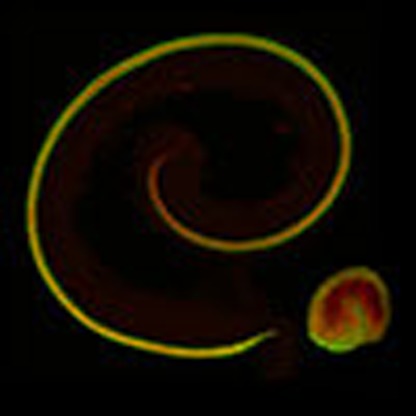- Record: found
- Abstract: found
- Article: found
Single-cell RNA-Seq resolves cellular complexity in sensory organs from the neonatal inner ear

Read this article at
Abstract
In the inner ear, cochlear and vestibular sensory epithelia utilize grossly similar cell types to transduce different stimuli: sound and acceleration. Each individual sensory epithelium is composed of highly heterogeneous populations of cells based on physiological and anatomical criteria. However, limited numbers of each cell type have impeded transcriptional characterization. Here we generated transcriptomes for 301 single cells from the utricular and cochlear sensory epithelia of newborn mice to circumvent this challenge. Cluster analysis indicates distinct profiles for each of the major sensory epithelial cell types, as well as less-distinct sub-populations. Asynchrony within utricles allows reconstruction of the temporal progression of cell-type-specific differentiation and suggests possible plasticity among cells at the sensory–nonsensory boundary. Comparisons of cell types from utricles and cochleae demonstrate divergence between auditory and vestibular cells, despite a common origin. These results provide significant insights into the developmental processes that form unique inner ear cell types.
Abstract
 Heterogeneous sensory epithelia of the inner ear are difficult to study owing to the
few cells that can be isolated. Here the authors provide insight into the developmental
processes underlying the formation of these cells by single-cell RNA-Seq.
Heterogeneous sensory epithelia of the inner ear are difficult to study owing to the
few cells that can be isolated. Here the authors provide insight into the developmental
processes underlying the formation of these cells by single-cell RNA-Seq.
Related collections
Most cited references52
- Record: found
- Abstract: found
- Article: not found
A gene expression atlas of the central nervous system based on bacterial artificial chromosomes.
- Record: found
- Abstract: found
- Article: not found
Single-cell transcriptomics reveals bimodality in expression and splicing in immune cells
- Record: found
- Abstract: found
- Article: not found